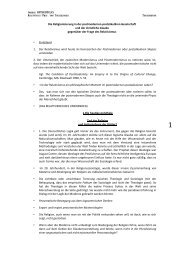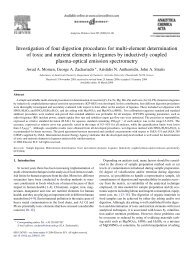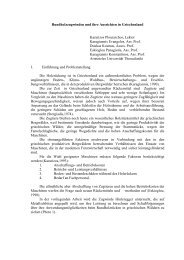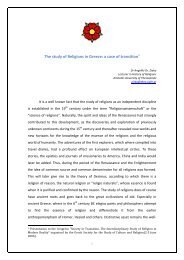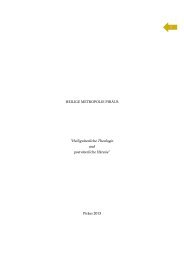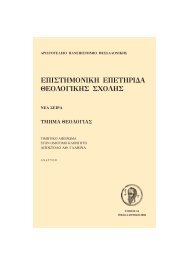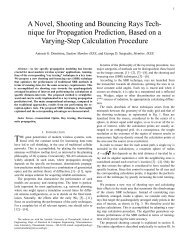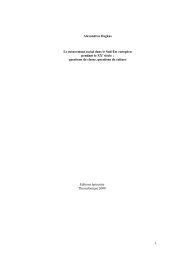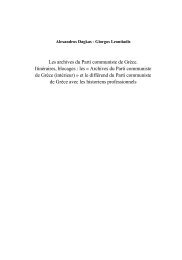Magazine: 3.pdf
Magazine: 3.pdf
Magazine: 3.pdf
You also want an ePaper? Increase the reach of your titles
YUMPU automatically turns print PDFs into web optimized ePapers that Google loves.
Downloaded By: [HEAL-Link Consortium] At: 08:57 19 October 2008<br />
2364 STRATIS, PAPADOYANNIS, AND ANTHEMIDIS<br />
2 L 6 8 1 0<br />
PH<br />
Fig. 2. Effect of pll on the extraction of copper. Curve 1:<br />
BPPII-Cu , curve 2 : RPPII-Cu with thiocyana tc, curve 3 :<br />
DPPH-Cu, curve 4: DPPH-Cu with thiocyanatc. [Cu 1<br />
2 .5 X<br />
5<br />
10- M, [BPPII] Z7.5 X lr5M, [DPPll] z7.5 X 10-5M, [SCN-]<br />
4<br />
2.5 X 10- M.<br />
better and over a wider pH range when thiocyanate is in ex-<br />
cess in the aqueous solutions. The pH of aqueous solutions<br />
was used to be 7.0k0.2. The effect of ligands concentration<br />
and the effect of thiocyanates concentrationon the extraction<br />
of copper (11) were studied.<br />
Figure 3 shows the effect of ligands concentration. The<br />
concentration of BPPH or DPPH must be 2.2 times greater than<br />
copper(I1) concentration for quantitative extraction. The li-<br />
gand concentration was used to be threefold molar excess over<br />
copper(I1) Concentration.<br />
Figure 4 Shows the effect of thiocyanate concentration.<br />
Conformance with Beer's law<br />
The extraction of copper(I1) from aqueous thiocyanate<br />
solutions is nearly complete, 97% extraction as BPPH-Cu-SCN,<br />
++



